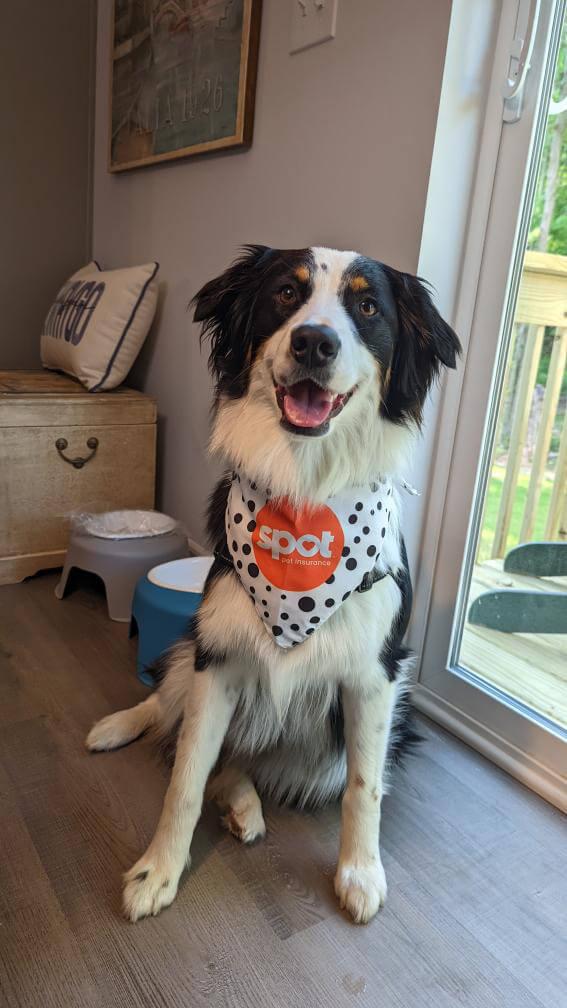Lupus in dogs is a serious but manageable autoimmune disease that can affect multiple parts of the body—from the skin and joints to vital organs. While it can sound overwhelming, knowing what it is, how it’s diagnosed, and what treatment looks like can help pet parents feel empowered and prepared.
Just like in humans, canine lupus occurs when the immune system mistakenly attacks the body’s own healthy cells. Depending on the type, lupus can cause mild skin irritation or more widespread inflammation throughout the body. With early detection and the right care plan, many dogs with lupus can go on to live comfortable, happy lives.
What Is Lupus in Dogs?
Lupus in dogs is an autoimmune disorder, meaning the body’s defense system turns against itself. Instead of fighting off bacteria or viruses, the immune system mistakenly targets normal tissues, leading to inflammation and tissue damage.
The disease can range in severity. Some dogs may only experience skin-related symptoms, while others may develop full-body inflammation that affects organs like the kidneys, heart, or joints. Lupus is chronic—meaning it can’t be fully cured—but with proper treatment, it can often be controlled successfully.
Types of Lupus in Dogs
There are two main types of lupus in dogs: Systemic Lupus Erythematosus (SLE) and Discoid Lupus Erythematosus (DLE). Understanding the difference between them helps pet parents recognize symptoms early and seek appropriate care.
Systemic Lupus Erythematosus (SLE)
SLE is the more severe form of lupus and can affect multiple organ systems at once. Dogs with SLE may experience joint pain, fever, fatigue, or inflammation in the kidneys, skin, or blood cells. The condition often cycles through flare-ups and remissions, meaning symptoms can worsen for a while and then improve with treatment. Because it affects several parts of the body, ongoing veterinary monitoring is crucial.
Discoid Lupus Erythematosus (DLE)
DLE, sometimes called “cutaneous lupus,” is limited to the skin—especially around the nose, mouth, and eyes. It causes sores, crusting, and loss of pigment on the skin. While DLE doesn’t typically affect internal organs, it can still cause discomfort and requires lifelong management. Sun exposure often worsens symptoms, so protecting your dog from harsh UV rays is an important part of treatment.
Causes and Risk Factors for Lupus in Dogs
The exact cause of lupus in dogs isn’t always clear, but it’s believed to involve a combination of genetics, environment, and immune triggers.
Some dogs are genetically predisposed to developing autoimmune conditions, especially certain breeds. Triggers such as sun exposure, infections, medications, or chronic stress may also play a role in activating lupus.
Middle-aged dogs and females tend to be diagnosed more often, though lupus can develop in dogs of any age or sex.
Symptoms of Lupus in Dogs
Lupus can look different from one dog to another, depending on the type and severity. Common signs include:
Fatigue, fever, or loss of appetite
Stiffness, limping, or swollen joints
Skin sores, scabbing, or color changes around the nose and face
Hair loss or sensitivity to sunlight
Mouth ulcers or crusting near the lips
Swollen lymph nodes
Weight loss or general weakness
If lupus affects internal organs, additional symptoms such as increased thirst, vomiting, or breathing issues may appear. Because symptoms can mimic other conditions, it’s essential to get a professional diagnosis rather than guessing based on appearance alone.
Diagnosing Lupus in Dogs
Diagnosing lupus in dogs can take time because symptoms often overlap with other illnesses. Your veterinarian will start with a physical exam and a thorough medical history, followed by diagnostic tests.
Common diagnostic tools include:
Blood tests to detect antibodies or inflammation markers
ANA (antinuclear antibody) test, which helps confirm autoimmune activity
Skin biopsies for dogs showing lesions or hair loss
Urine tests and organ function panels to assess internal impact
Because lupus can flare and subside, your vet may need to observe your dog’s condition over time before confirming a diagnosis.
Treatment for Lupus in Dogs
While there’s no cure for lupus, it can often be managed effectively with the right treatment plan.
Treatment typically includes:
Immunosuppressive medications to reduce the immune system’s overactivity
Corticosteroids to control inflammation and pain
Topical creams or ointments for DLE-related skin lesions
Antibiotics or antifungal medications if secondary infections occur
Lifestyle adjustments, such as avoiding direct sunlight and minimizing stress
Regular vet visits are essential to monitor progress and adjust medications as needed. Dogs with SLE may need lifelong therapy, while those with DLE can often stabilize with consistent skin care and limited sun exposure.
Cost to Treat Lupus in Dogs
For DLE, expenses may be limited to skin treatments and routine follow-ups. SLE, on the other hand, may require more frequent vet visits, bloodwork, and medication adjustments over time.
While lupus is a chronic condition, many pet parents find that consistent management helps keep both costs and symptoms under control. Dog insurance can also help cover ongoing treatments, making long-term care more affordable.
Long-Term Care and Outlook for Dogs Living With Lupus
Dogs diagnosed with lupus can live full, rewarding lives when their condition is managed properly.
For dogs with DLE, the prognosis is typically good—especially if symptoms are controlled and sun exposure is minimized. Dogs with SLE may require more hands-on care, but many respond well to medication and enjoy several years of good quality life.
Pet parents can help by:
Following their vet’s medication plan carefully
Scheduling regular checkups and lab work
Maintaining a balanced diet and hydration
Reducing stress and avoiding long periods in sunlight
With time and attention, dogs with lupus can continue to thrive and enjoy happy, active lives.
FAQ: Common Questions About Lupus in Dogs
Q1: What are the symptoms of lupus in a dog? Symptoms can include fatigue, joint pain, fever, hair loss, scabbing around the nose or ears, and loss of appetite. In severe cases, lupus may also affect internal organs like the kidneys or liver.
Q2: How long will a dog with lupus live? Many dogs with lupus live for several years after diagnosis, especially with early treatment and consistent care. Dogs with DLE often do well long-term, while those with SLE may need lifelong monitoring.
Q3: What breeds of dogs are prone to lupus? Breeds like the German Shepherd, Siberian Husky, Shetland Sheepdog, and Collie appear more likely to develop lupus. However, any breed can be affected depending on genetics and environmental triggers.
Q4: What are the first warning signs of lupus? Early warning signs include tiredness, stiffness, skin irritation on the face or nose, and sores that worsen after sunlight exposure. Seeing a vet right away helps ensure faster diagnosis and treatment.
More About Spot Pet Insurance
Spot accident and illness plans can be used with any licensed vet in Canada or the U.S. Whether you are home or traveling to the U.S., Spot can reimburse the cost of vet bills for the diagnosis, treatment, or management of covered conditions. Spot’s accident and illness plans can help cover a variety of conditions, including broken bones, lacerations, aggression, kidney disease, diabetes, and more. Pet parents can also get cash back on the cost of routine care, including wellness exams, certain vaccinations, dental cleanings, and more, by adding a wellness rider to their plan for an additional cost.
To learn more about Spot Plans or to get a free quote, click here.
Key Takeaway
Lupus in dogs may sound daunting, but with early detection, the right medication, and regular veterinary care, many dogs go on to live long, comfortable lives.
By learning to recognize symptoms, working closely with your vet, and managing lifestyle factors like stress and sunlight, pet parents can help their dogs stay healthy and happy—even with an autoimmune diagnosis.

I’m Charlie: canine enthusiast with a knack for figuring out why my dog, Dallas, is more infatuated with tennis balls than me. My lifelong passion for dogs has created a dedication to help other pet parents better understands their furry family members!
*Based on 2025 Spot Pet Insurance Services, LLC. Claims data












